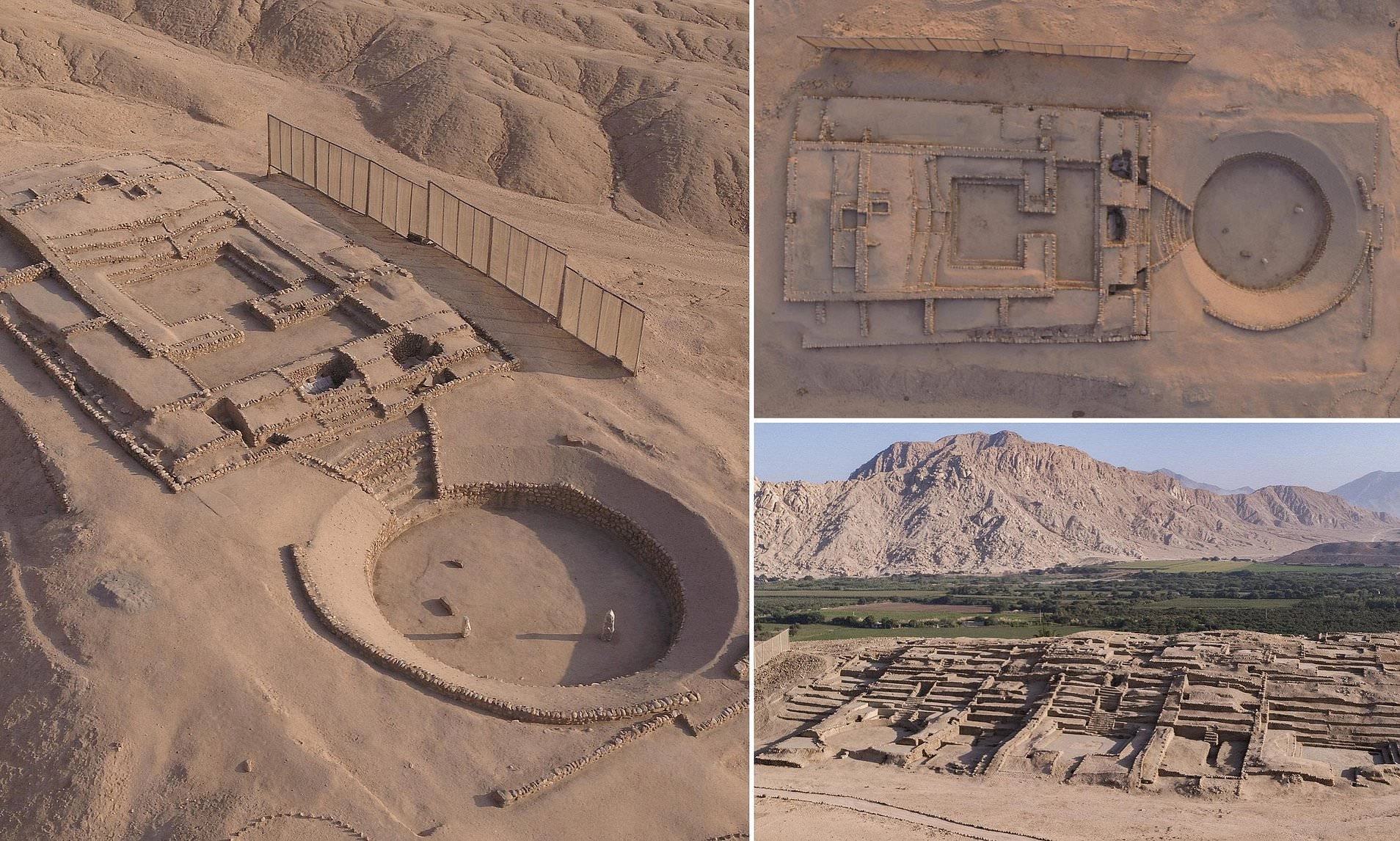- snapchat
- native

An ancient city has been discovered in Peru that once was a trading hub thousands of years ago.
The 3,500-year-old settlement, named Pe�ico, is located in the northern Barranca province - close to where the Caral civilisation, the oldest on the America, developed 5,000 years ago.
Archaeologists believe Pe�ico was likely a trading hub linking Pacific coast cultures with those in the Andes mountains and the Amazon basin.
Ceremonial temples and residential complexes were uncovered as well as a circular structure on a hillside terrace, with remains of stone and mud buildings constructed some 600m above sea level.
The walls of a central plaza stand out for their sculptural reliefs and depictions of the pututu, a conch shell trumpet whose sound carries over long distances.
In other buildings, researchers found clay sculptures of human and animal figures, ceremonial objects and necklaces made from beads and seashells.
The then-bustling city - with 18 surviving structures that have been studied in the last eight years - would have been at its peak at around the same time as early civilisations in the Middle East and Asia, between 1,800 and 1,500 BC.
But what has intrigued archaeologists most is that Pe�ico is close to where the Caral civilisation, the oldest in the Americas, developed 5,000 years ago.
An ancient city has been discovered in Peru which was likely a trading hub linking Pacific coast cultures with those in the Andes mountains and the Amazon basin The 3,500-year-old settlement, named Pe�ico, is located in the northern Barranca province Researchers found clay sculptures of human and animal figures, ceremonial objects and necklaces made from beads and seashellsCaral, comprised of 32 monumental structures, is considered a contemporary of civilisations in Egypt, India, Sumeria and China.
However, unlike them, it developed in complete isolation, according to researchers.
Ruth Shady, the archaeologist who led the research into Pe�ico, said the newly unveiled city is key because experts believe it emerged after the Caral civilisation was devastated by climate change.
'They were situated in a strategic location for trade, for exchange with societies from the coast, the highlands and the jungle,' Shady said.
Archaeologist Marco Machacuay, a researcher with the Ministry of Culture, said at a news conference that Pe�ico's importance lies in it being the continuation of the Caral society.
Peru is a center of ancient cultures and home to archaeological sites such as the Inca ruins of Machu Picchu in Cusco and the mysterious Nazca lines located in the desert region along the country's central coast.
In May, a vandal sparked outrage after being filmed spray painting what appeared to be a penis onto a wall at an ancient Peruvian UNESCO site .
In footage, the man was seen spraying the crude graffiti on one of the original walls of Chan Chan, a pre-Columbian city 300 miles north of Lima that is flooded with thousands of visitors each month.
The then-bustling city would have been at its peak at around the same time as early civilisations in the Middle East and Asia, between 1,800 and 1,500 BC Ruth Shady, the archaeologist who led the research into Pe�ico, said the newly unveiled city is key because experts believe it emerged after the Caral civilisation was devastated by climate change The walls of a central plaza stand out for their sculptural reliefs and depictions of the pututu, a conch shell trumpet whose sound carries over long distancesHe wore a backpack and drew a giant black phallic shape on the stone which is more than 600 years old and a World Heritage Site.
Peru's ministry of culture said the culprit showed 'a grave disrespect toward our history and cultural heritage, as well as a violation of the regulations that protect archaeological heritage sites.
'We express our strongest condemnation of this regrettable act of vandalism,' the ministry emphasised in its statement.
Authorities have not yet identified the attacker but he could face up to six years behind bars if he is caught under Peruvian heritage protection statutes.
The clip of the incident has made its rounds of social media, leaving viewers stunned at how he was able to damage the wall unchallenged. Others questioned why the site was not better protected.
Chan Chan was the capital of the Chimu kingdom before it fell to the Incas in the 15th century and it remains one of Peru's most important archaeological sites.
The Citadel of Chan Chan was built on an area of approximately 20 square kilometers, featured ten palaces, and at its peak housed approximately 30,000 inhabitants.
It is regarded as the largest mud city in the world.
The complex features temples, residential structures, and storage buildings, any adorned with intricate and symbolic carvings.
Together with the stone citadels of Machu Picchu and Caral, Chan Chan forms the most important archaeological complexes in Peru.



